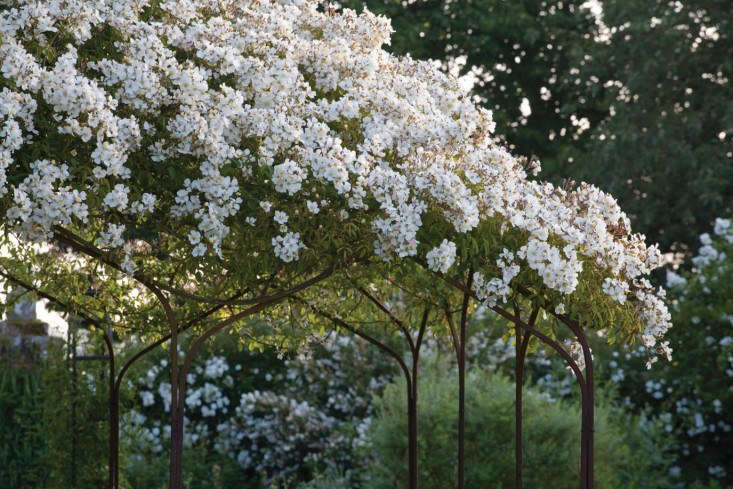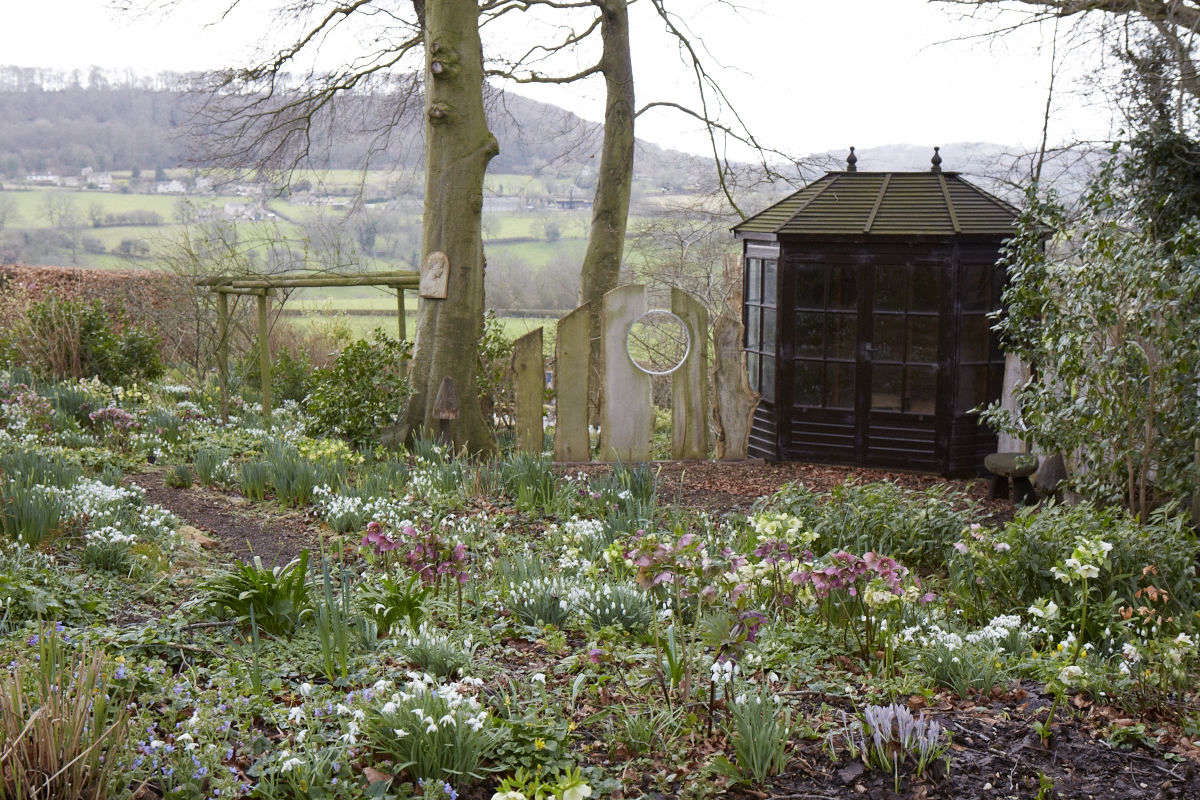Pale starry anemones were busy cheering up the roadsides in East Sussex the other day, along with cowslips and bluebells. Pale lilac cuckooflower colonized banks and ditches. These volunteers are all garden-worthy plants in themselves, and all were also spotted in the highly cultivated gardens of the Kent and Sussex Weald.
This area of England is generously wooded and the old tradition of coppicing continues. Native woodland plants thrive from the periodic thinning out of the canopy, and they are equally happy sheltering under hedgerows. No heavy shade here but dappled sunlight: a dream to plant under. Take your cue from nature and turn your shady areas into a wild garden: in other words, an edited version of what is going on in the shady lanes and byways.
Photographs by Kendra Wilson.

Above: Hazel is coppiced by cutting back periodically to ground level, creating a multi-stemmed shrub with useful straight poles. Epimedium, in the foreground, along with white and lilac wood anemones, euphorbia and, in the background, Rheum palmatum thrive in the Nuttery at Sissinghurst.
For a similar look, Epimedium Bandit is $19.95 apiece from White Flower Farm; ships for spring planting.

Above: Natives are joined by the North American woodland flower, trillium. The white form, Trillium grandiflora, harmonizes with the pale colors of this low-maintenance planting scheme. Crimson Trillium sessile (shown here) is thrown in to shake things up a bit.
A set of 12 White Trillium Root Systems, ready to plant, is $11 from Buff View Nursery via Etsy.

Above: Originally the Nuttery was planted with high-maintenance polyanthus. The head-gardening duo Pam Shwerdt and Sibylle Kreutzberger, who arrived at Sissinghurst in 1959, replaced bedding plants with easier drifts of subtle color which would last for longer than just one season. The coppiced hazels reach towards the center, making an informal tunnel.

Above: Euphorbia is seen growing wild all around the hedgerows of East Sussex. This variety is Mrs Robb’s bonnet (Euphorbia amygldaloides var. robbiae).

Above: Fern and anemones. At the risk of over-emphasis: if it’s good enough for common ground, it’s good enough for your garden (within reason).

Above: Oxlips are quite rare in the wild, compared with their cousins the cowslips. Oxlips are natural hybrids, incorporating the heightened clusters of cowslips with the subtle butter yellow and flower-shape of primrose.

Above: Snake’s head fritillary in the meadow at Great Dixter. It grows in long grass in the company of narcissi and looks perfectly natural. Both enjoy the company of ground cover planting or rough grass.
Shipped for fall planting, Fritillaria Meleagris is $10.95 for 25 bulbs from White Flower Farm.

Above: Coppice and hedge, with euphorbia and anemone scattered around. This is Sissinghurst but really, it could be a snapshot of the forested Sussex Weald.
For more views of Sissinghurst, see The English Gardener: His and Hers, Harold and Vita.







Have a Question or Comment About This Post?
Join the conversation